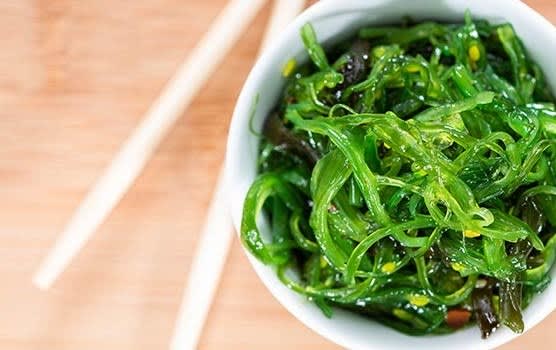Industry Overview
The Indonesia seaweed market encompasses a variety of seaweed products harvested for use in food, pharmaceuticals, cosmetics, and industrial applications. Indonesia is one of the largest producers of seaweed globally, with its tropical waters and extensive coastline providing ideal cultivation conditions. The industry includes red, green, and brown seaweed varieties, which are used in processed products such as carrageenan, agar, alginate, snacks, health supplements, and bioactive compounds. The market’s growth is influenced by global demand for natural food ingredients, increasing awareness of functional foods, and rising investment in sustainable aquaculture practices.
Market Size & Growth
The Indonesia seaweed market was valued at approximately USD 116.39 Million in 2024. Looking forward, it is expected to reach USD 236.78 Million by 2033, exhibiting a growth rate (CAGR) of 8.21% during 2025-2033. This growth highlights Indonesia’s dominant role in global seaweed production and the expanding applications of seaweed in food, pharmaceutical, and industrial sectors.
For an in-depth analysis, you can refer free sample copy of the report: https://www.imarcgroup.com/indonesia-seaweed-market/requestsample
Key Trends in the Indonesia Seaweed Market
The market is being shaped by several key trends that reflect evolving consumer preferences and industry innovations:
● Sustainable and Eco-Friendly Production
Environmental sustainability is a major focus, with companies adopting eco-friendly cultivation practices, reducing chemical use, and promoting organic seaweed farming. These practices align with global sustainability goals and increase consumer confidence in seaweed-based products.
● Functional and Nutritional Applications
Seaweed is increasingly recognized for its health benefits, including high fiber, vitamin, and mineral content. Food manufacturers are incorporating seaweed into functional foods, snacks, and dietary supplements, emphasizing its role in promoting gut health, weight management, and immunity.
● Industrial and Cosmetic Use Expansion
Apart from food applications, seaweed derivatives such as carrageenan, agar, and alginate are witnessing strong demand in pharmaceuticals, cosmetics, and industrial products. Companies are innovating with bioactive compounds from seaweed for skincare, medicinal, and packaging solutions, expanding market opportunities beyond traditional sectors.
Growth Drivers
Several factors are driving the expansion of the Indonesia seaweed market:
● Global Demand for Natural Ingredients
Rising consumer preference for natural, plant-based ingredients in food, personal care, and pharmaceutical products has increased demand for seaweed. Its functional benefits, such as gelling and stabilizing properties, further enhance its value.
● Government Support and Aquaculture Development
The Indonesian government provides initiatives and subsidies to support sustainable seaweed cultivation, improve processing facilities, and strengthen export potential. Investments in research and training for farmers also boost yield and product quality.
● Rising Health Awareness
Growing awareness of nutrition and functional foods among global consumers is promoting seaweed consumption. Its rich nutrient profile and bioactive compounds are increasingly incorporated into supplements and health-oriented food products.
Explore the Full Report with Charts, Table of Contents, and List of Figures: https://www.imarcgroup.com/indonesia-seaweed-market
Segment Analysis
The Indonesia seaweed market can be segmented by product type and application:
Environment Insights:
• Aquaculture
• Wild Harvest
Product Insights:
• Red
• Brown
• Green
Application Insights:
• Processed Foods
• Direct Human Consumption
• Hydrocolloids
• Fertilizers
• Animal Feed Additives
• Others
Regional Insights:
• Java
• Sumatra
• Kalimantan
• Sulawesi
• Others
Future Opportunities
• Product Innovation: Developing high-value seaweed-based functional foods, supplements, and cosmetics tailored to consumer health trends.
• Digital and Export Expansion: Leveraging e-commerce platforms and global distribution networks to reach international markets efficiently.
• Sustainable Practices: Promoting organic and environmentally friendly cultivation to appeal to eco-conscious consumers worldwide.
Discuss Your Needs with Our Analyst – Inquire or Customize Now: https://www.imarcgroup.com/request?type=report&id=37697&flag=C
Conclusion
The Indonesia seaweed market is poised for sustained growth, driven by global demand for natural and functional ingredients, government support, and technological innovations in cultivation and processing. With Indonesia’s position as a leading global producer, the market presents lucrative opportunities for companies that invest in sustainable practices, product diversification, and international expansion.
FAQs
Q1: What are the key factors driving growth in the Indonesia seaweed market?
A1: Key growth drivers include global demand for natural ingredients, supportive government policies for aquaculture, rising health awareness, and expanding applications in food, pharmaceuticals, and cosmetics.
Q2: Which product types are most popular in the Indonesia seaweed market?
A2: Red seaweed is widely used for carrageenan production, green seaweed for snacks and supplements, and brown seaweed for alginate, pharmaceuticals, and cosmetic products.
Q3: What role does Indonesia play in the global seaweed industry?
A3: Indonesia is one of the largest producers and exporters of seaweed globally, supplying raw seaweed, carrageenan, agar, and alginate to international markets.
Q4: What challenges do companies face in the Indonesia seaweed market?
A4: Challenges include environmental sustainability, maintaining consistent quality, fluctuating global prices, and competition from other seaweed-producing countries.
